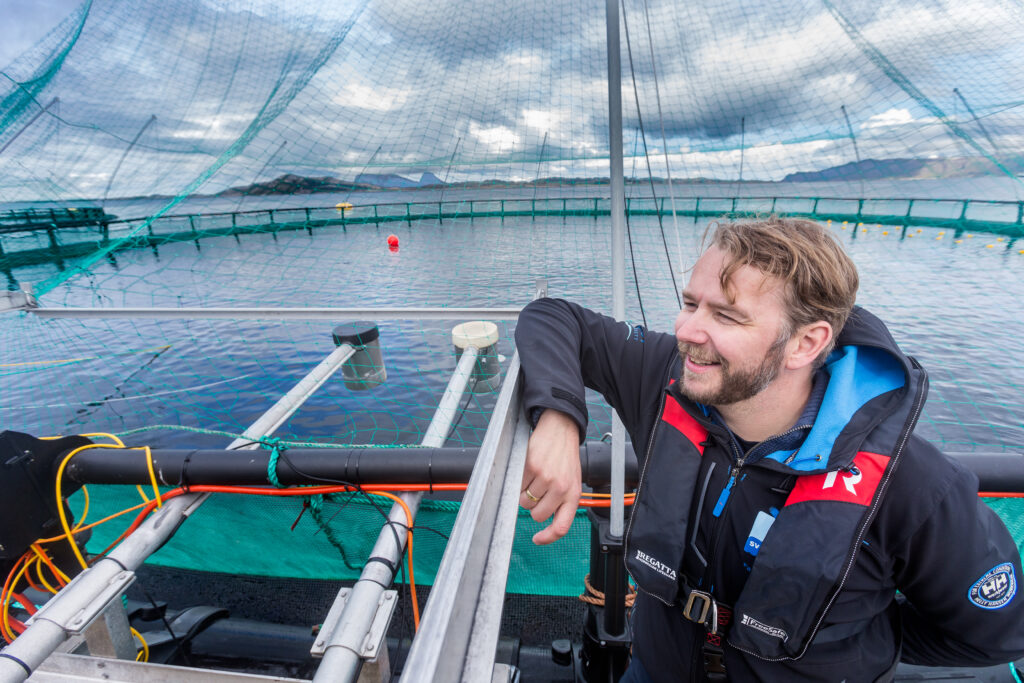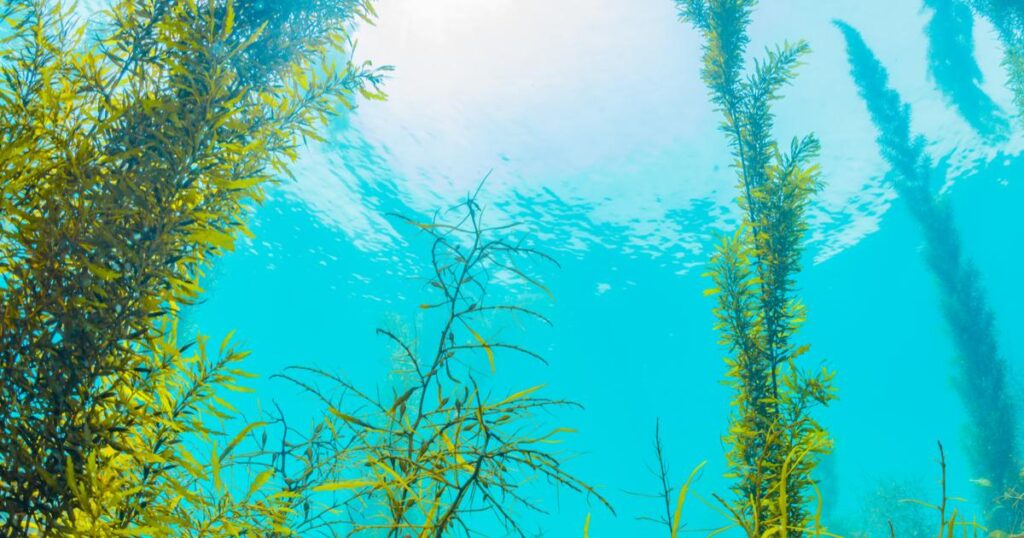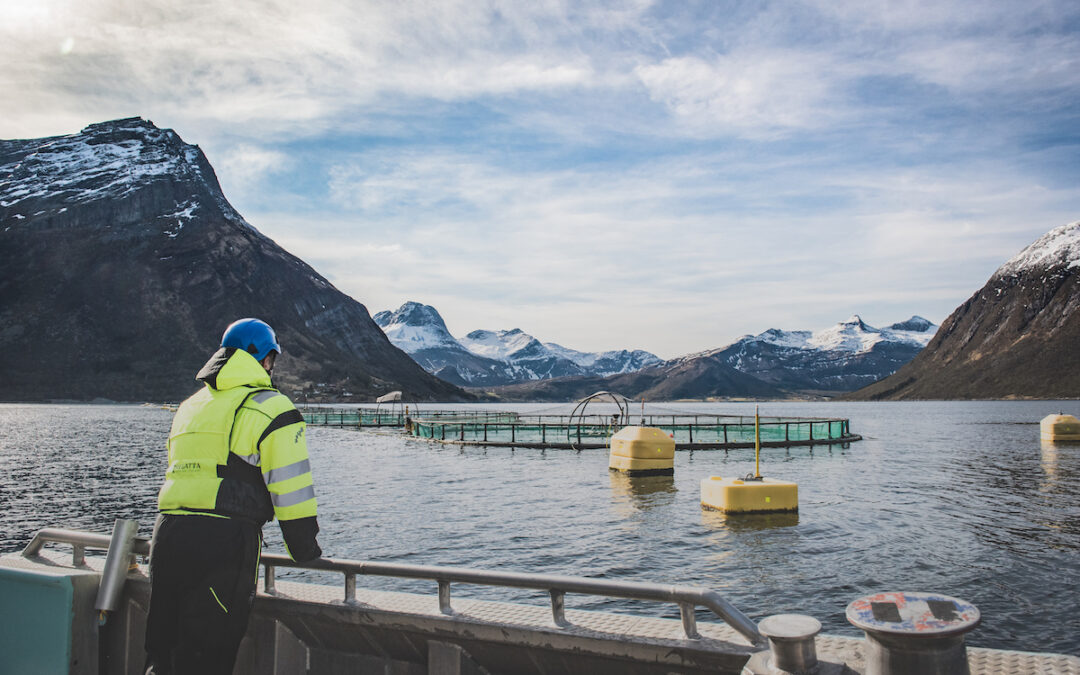Love seafood, but concerned about the health of our oceans? It’s a predicament many of us face.
Scientists and activists have sounded the alarm that humans’ appetite for seafood is outpacing what fishermen can sustainably catch – 64% of wild species in the ocean are depleted or exploited (Food and Agriculture Organization of the United Nations).
The Threat to Our Oceans
Sea life – at all levels of the food chain – are at risk. Even if we were to radically reduce the number of boats, hooks, and nets currently in use in the oceans, we would still not be guaranteed fish for future generations.
Our global population is also projected to reach 10 billion people by 2050, and in the next 40 years, world demand for animal protein will nearly double. Some of the most populous nations on the planet lead the fish-catching and consumption trends: China, Japan, and the United States.
Aquaculture: The Blue Revolution
How do we solve this global crisis? By sustainably and ethically farming the water both off-shore and on-land. Aquaculture done right continues to be one of the most important and viable solutions to meet the protein demands (The United Nations).
In fact, research suggests there is space on the open ocean for sustainably farming essentially all of the seafood humans can eat:
A team of scientists led by Rebecca Gentry of the University of California, Santa Barbara (UCSB) found that wide-scale certifiable aquaculture utilizing coastal waters could outproduce the global demand for seafood by a staggering 100 times.
How much fish is that? 16.5 billion tons of fish per year, or about 4,000 pounds per person!
Dr. Halley Froehlich of UCSB believes seafood consumption will eventually replace a considerable amount of land-based meat production.
Farmed Fish vs. Chicken, Beef, and Pork
When it comes to farming animals for protein, sustainably farming fish has the least impact on the environment. By eating sustainably-reared fish, we have the power to alleviate agricultural pressures on land and water resources.
So how exactly does farmed fish compare to other proteins like beef, pork, or chicken?
- A pound of beef requires 13 pounds of feed and 2,500 gallons of water,
- A pound of pork requires 6 pounds of feed and 1,300 gallons of water.
- A pound of chicken requires 2.3 pounds of feed and 2,000 gallons of water.
- A pound of fish requires 1.2 pounds of feed and 1 gallon of water.

Water Farming Done Right: Sustainable, Ethical, and Restorative
Of course, we must recognize that it all comes down to HOW these animals are farmed. You can farm chicken badly, but you can also farm it well. The same applies to seafood – there are deeply concerning examples of aquaculture, but there are also ethical, sustainable, and restorative water farmers doing it exceptionally well.
We all have the chance to support those who are doing it right.
When choosing your seafood, look to support sustainable water farmers who:
- Are in restorative aquaculture. This mean they are farming shellfish, seaweed, and kelp, which support the health of the water and sequester carbon!
- Use sustainable feeds that reduce or eliminate the use of wild fish to feed farmed fish (and if they do use wild fish, it’s fish trimmings from sustainable fisheries) and also incorporate algae, insects, and microbes.
- Sustainably manage their farm with practices that keep fish healthy without antibiotics or hormones.
- Exist in harmony with the oceans, waterways, and wildlife – these are operations that have committed to being careful stewards of the environment. Sustainable aquaculture also has zero bycatch and can actually add nutrients and reduce waste in the water.
- Work with approved NGOs such as Seafood Watch, the Aquaculture Stewardship Council (ASC), Trace Register, and Fish Choice.
Plus, by buyingd frozen fish, you would also reduce carbon emissions by 90%!

Farmed Shellfish and Farmed Seaweed Are Aquaculture Too
Aquaculture doesn’t only mean farming finfish either – water farmers also raise shellfish and seaweed.
In fact, we need to move more bivalves (like clams, oysters, mussels!), sea vegetables, and kelps to the center of our plates. We need to consider them as an important part of our everyday pantry – we need to stock a Sea Pantry.
The future of restorative ocean farming is polyculture – not monoculture. There are thousands of species of edible shellfish and seaweeds in our oceans, but only a handful are farmed around the world. Restorative ocean farming represents our chance to do food right and ensure that those working at sea can make a living on a living planet.
The Bottom Line
Our behavior has to change to ensure the vitality of our oceans and the long-term availability of fish in our diets.
Both farming and aquaculture must evolve, along with our attitudes and beliefs around aquaculture – remember it’s not farmed vs. wild, it’s a healthy balance of both done sustainably.
Through your efforts, you can make a huge impact to preserve both fishing and farming as viable options for the future, just by asking and knowing where your seafood comes from.
When everyone commits to sustainability, our health, and the health of our oceans, we’ll have the most delicious foods from the sea for generations to come!

